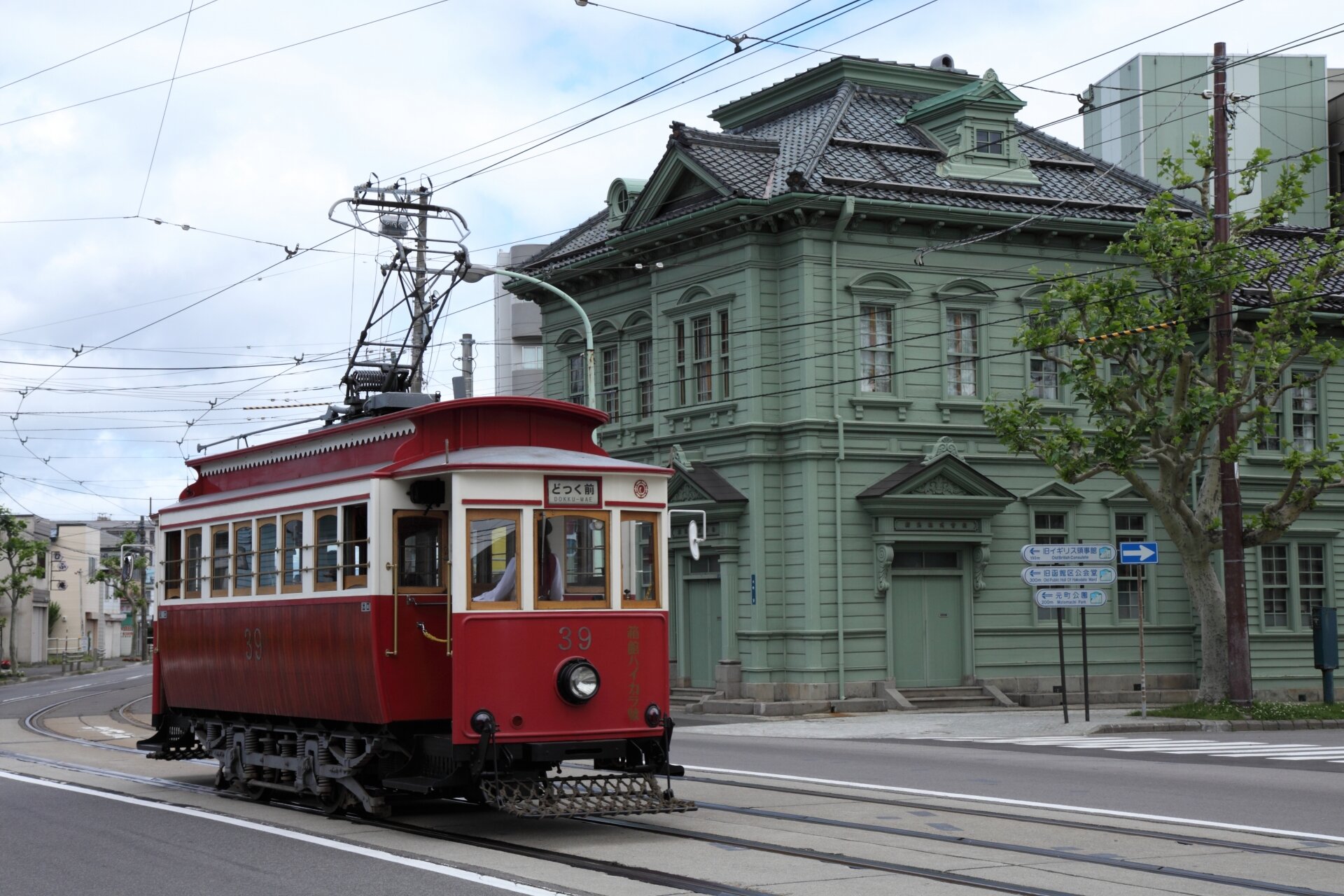Solving Traffic Jam with Nostalgic Scenery - Trams in Japan
Tram lines were considered obstructions to traffic during the time of mass motorisation in the 1960s and the 70s. Subway metro system and individual cars were the preferred option for city planners, but that is changing now in the 21st Century.
Infrastructure to Bring People in Town Centre
There are currently nineteen tram operators in Japan, and they saw a five per cent increase in passengers from 2012 to 2017. Toyama city, a medium-sized town facing the Sea of Japan, recorded a 24% increase during this time. Their city tram system transported 5 million passengers in 2017, 1 million more than 2012. The new branch of Shinkansen opened in 2015, which stops at Toyama City station. It made it easy for visitors from the Tokyo area to come to the city, and the city planned the new Shinkansen platform connecting to the tram network which carries visitors directly to tourist attractions.The city hall deliberately did not add a car park to their centrepiece new development, “Toyama Kirari”, and made sure that the tram network connected the major train stations, the museums and the libraries.Toyama City is calling itself “Compact City”, and attempts to manage the concentration of population in an area where public transportation is available, mainly in the town centre. Other cities, such as Kumamoto, follow this model, making the tram system a vital part of the city experience. For those whose primary customers are tourists, the unique tram designs are important. For example, Kumamoto’s trams are all equipped with large retro-style headlamps, and they have been in service since 1951. Another city, Okayama, is planning to launch a fleet of Chuggington trains as family attractions.
Historic “Bocchan Tram” in Matsuyama City for Nostalgic Trip
Matsuyama city is famous for the traditional spa, Dougo Onsen. a special tram, called Bocchan Train, connects JR Matsuyama Station and the onsen town in 25 minutes, only costing 160 yen, about USD1.50. It is not only convenient and cost-effective, but Bocchan Trains are revived copies of the original steam trains, which were in service for 67 years since 1889. It is named after the famous novel Bocchan (Young Master) by Souseki Natsume, which is set in Matsuyama and Dougo Onsen. This novel is so beloved that at least five movies, more than ten TV series, as well as Manga, Anime, and theatre productions, have been based on it.. These adaptations made the steam engine trams immortal icons. Even after they were replaced by electrically-powered trains, there existed a demand to revive the steam engines. As the trams are part of tourist experiences, in 2001, the city reintroduced two original trains with diesel engines, overcoming some serious technical challenges.They are an important part of the fleet that carried over 7 million people, tourists and locals, in 2017.
Public Transport Kind to Aging Japan
Hiroshima city boasts the top usage at 40 million passengers per year. Unlike many others, the trams never stopped operating here. In the 1970s, while large cities yielded space to cars and buses, Hiroshima city kept the tramlines, purchased second-hand trains, renovated and improved them and minimised investment. The town kept automobile traffic separate from trams, so that there existed an option to beat traffic jams in the city centre. As the prime survivor of motorisation, Hiroshima Tram has become a tourist attraction in the 1980s. a scene with a tram was a rare and exciting sight for many train fans. Being the primary means of transport for citizens of Hiroshima, the city always focused on keeping everyone moving effectively. In 1999, ultra-low step trams were introduced – a consequence of the relocation of lder people in town after their grown-up family members left their home in the suburbs. Ease of access is a primary concern for any public service nowadays. The tramline is incorporated in the redevelopment plan of the railway station, due to finish in 2024, making sure that there will be as few barriers as possible for anyone when changing from one line to another.
Trams are Making a Comeback in 21st Century Japan
Being subjected to technological and social development, the tram, introduced to Japan in 1895, expanded and declined rapidly within only 80 years. Economic growth favoured the subway train system for mass transportation. But medium-sized cities like Hiroshima showed that, with careful planning, trams can be a very attractive part of the transport network, giving barrier-free options for less mobile people, while giving visitors the opportunity to see the city while on the move, and furthermore providing local authorities with a more economical way to expand public transport (10% only against subway metro). As society matures, the exploration of more options is a welcome way of improving experiences for citizens.
